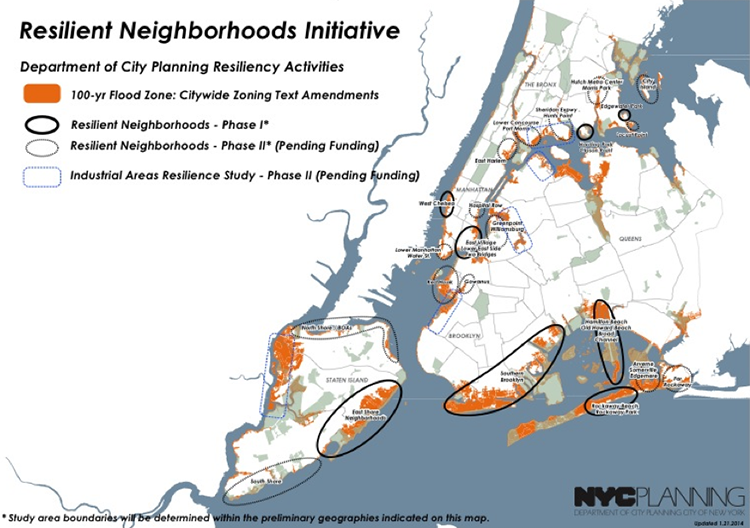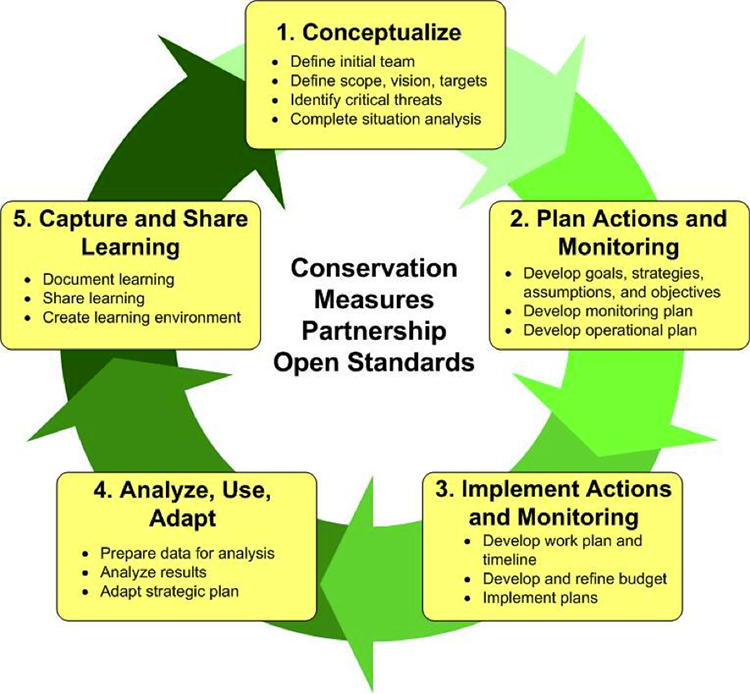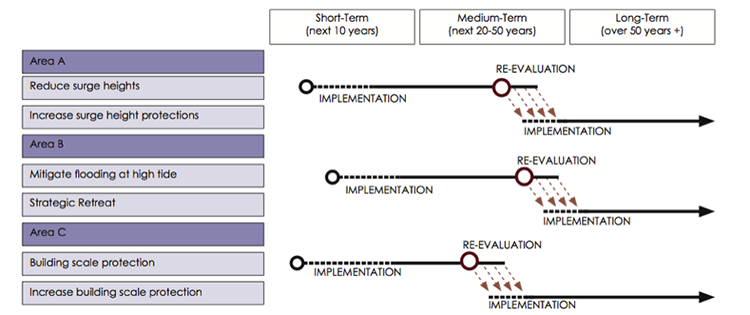Adaptive Management
For now, New York City has chosen to adopt protections similar to those outlined in the hybrid strategy. Why would the City choose a strategy that is beneficial now, but may not be cost-effective in the future? One reason may be that people often give more weight to present-day costs and benefits than to future costs and benefits. Recognizing this difference between present value and future value, economists have developed a technique called discounting that decreases the value of future costs and benefits at a constant rate. This means that costs or benefits that will not occur for many decades are given much less weight in the cost-benefit analysis than costs or benefits that will occur in the next few days, weeks, or years. When discounting is applied, the rationale for New York City’s decision is clearer. Building a sea wall now would be very costly, requiring large expenditures in the short-term. While the benefits of building the sea wall could be large in the long-term, these benefits will not be realized for some time, and are therefore offset by the significant upfront costs.

As this New York City example illustrates, it can often be advantageous for communities to switch from one strategy to another as costs and benefits change. An adaptive management approach to preparing for sea level rise can help communities to identify opportunities to adopt new strategies or to adjust strategies already in place as conditions and goals change. In the adaptive management cycle, stakeholders and experts work together to monitor the effects of implementing coastal protection strategies on natural and human systems. Based on this monitoring, they learn which strategies are furthering or frustrating design goals (such as protecting neighborhoods from flooding or restoring coastal habitat) and share this learning with policymakers by suggesting changes or adjustments in strategies.

Click to expand to provide more information.
(In the center of the cycle are the words Conservation, Measures, Partnership, Open Standards. In a circle of 1-5, and continuing on to 1 again - the cycle contains the following text :
- Conceptualize
- Define initial team
- Define scope, vision, targets
- Identify critical threats
- Complete situation analysis
- Plan Actions and Monitoring
- Develop goals, strategies, assumptions, and objectives
- Develop monitoring plan
- Develop operational plan
- Implement Actions and Monitoring
- Develop work plan and timeline
- Develop and refine budget
- Implement plans
- Analyze, Use, Adapt
- Prepare data for analysis
- Analyze results
- Adapt strategic plan
- Capture and Share Learning
- Document learning
- Share learning
- Create learning environment
In the context of climate-change related hazards such as sea level rise, adaptive management is often supplemented with flexible adaptation pathways: plans that show how existing strategies for adapting to sea level rise can be supplemented, adjusted, or replaced with other strategies in the future as conditions change. By building flexibility into the planning process to allow easy transition from one strategic pathway to another, these pathways can help communities adopt the most cost effective strategies now, while keep their options open for the future.

Learning Check Point
Please take a few moments to think about what you just learned, then answer the following questions to test your knowledge.
